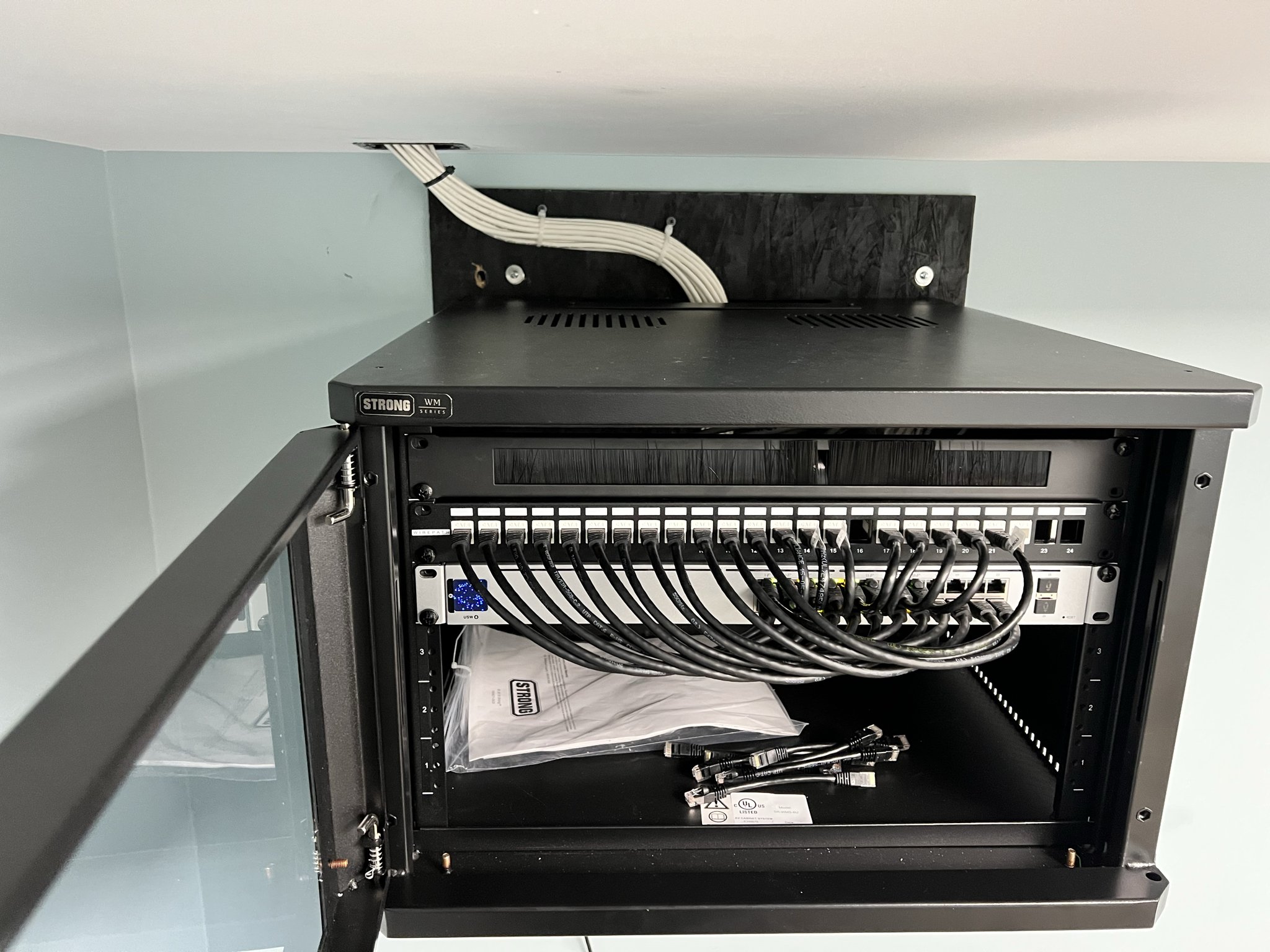Building Your Office Network: A Comprehensive Guide to Setting up a New Office
In today's business world, a fast and reliable IT infrastructure is essential to keep your business running smoothly. As a business owner, setting up a new office IT build with new routers, firewalls, and Wi-Fi access points is crucial for ensuring a secure and efficient network. In this blog, we will discuss the key steps involved in configuring a new office IT build with new routers, firewalls, and Wi-Fi access points.
Step 1: Define Your Network Requirements
Before you start setting up your new office IT build, it is essential to define your network requirements. This involves identifying the number of devices that need to be connected to your network, the type of data being transmitted, and the number of users who will be accessing your network.
For our recent client build, we connected their three offices within the same building to the same network, with the primary office handling all the routing of data. To complete this task, we provided low voltage cable installation to all of the offices and documented the installation. We then installed 24-port PoE switches in each office, with uplinks from the primary office. We also installed 15 VoIP phones for users and three network printers. Lastly, we provided the client with a secondary ISP within their firewall configuration to allow for redundancy.
Step 2: Select the Right Equipment
Once you have defined your network requirements, it's time to select the right equipment for your office IT build. This includes routers, firewalls, and Wi-Fi access points. When selecting equipment, it's important to consider factors such as compatibility, performance, and reliability. You should also consider the size of your office, the number of users, and the type of data being transmitted.
For our latest build, we decided on Ubiquiti’s UDM Pro firewall, 2 POE switches and 7 U6-Pro Access Points to handle 3 office spaces with a total of 20 - 30 users between all offices. Ubiquiti is part of our Silver Package for Office Builds. It allows for scalability, security and affordability.
Step 3: Configure Your Routers
Routers are the backbone of your network, so it's essential to configure them correctly. This involves setting up the IP address, subnet mask, and default gateway. You should also configure the router to support DHCP to automatically assign IP addresses to devices on your network. Other important router settings include NAT, firewall rules, and port forwarding.
Step 4: Configure Your Firewalls
Firewalls are an essential part of any network infrastructure as they protect your network from unauthorized access. When configuring your firewall, you should consider setting up access rules to control traffic flow to and from your network. You should also set up rules to block any unwanted traffic, such as spam or malware.
Step 5: Configure Your Wi-Fi Access Points
Finally, it's time to configure your Wi-Fi access points. This involves setting up the SSID, security mode, and encryption. You should also configure the Wi-Fi access points to support WPA2-PSK or WPA3 encryption to ensure that your network is secure. You should also set up a guest network to allow visitors to access the internet without accessing your main network.
Step 6: Documenting your Network Configuration
Documentation is a crucial aspect of any IT office build, as it provides a record of the configuration and setup of your network. Having detailed documentation allows you to track changes to your network over time, troubleshoot issues that may arise, and ensure that your network remains secure and up-to-date.
Conclusion
Setting up a new office IT build with new routers, firewalls, and Wi-Fi access points can be a daunting task, but it's essential for the smooth operation of your business. By following the steps outlined above, you can ensure that your network is secure, reliable, and efficient. If you are unsure about how to set up your new office IT build, it's always a good idea to consult with an IT professional to ensure that everything is set up correctly.
Do not hesitate to contact our team for any advice or guidance. We are here to assist you in reaching your goals and we welcome any inquiries you may have. We believe that our team is well-equipped to provide the help you need and we are proud to offer our services.
Did you find the article useful? If so, make sure to follow us on Twitter, LinkedIn and Facebook to stay up to date with more content that we post.



